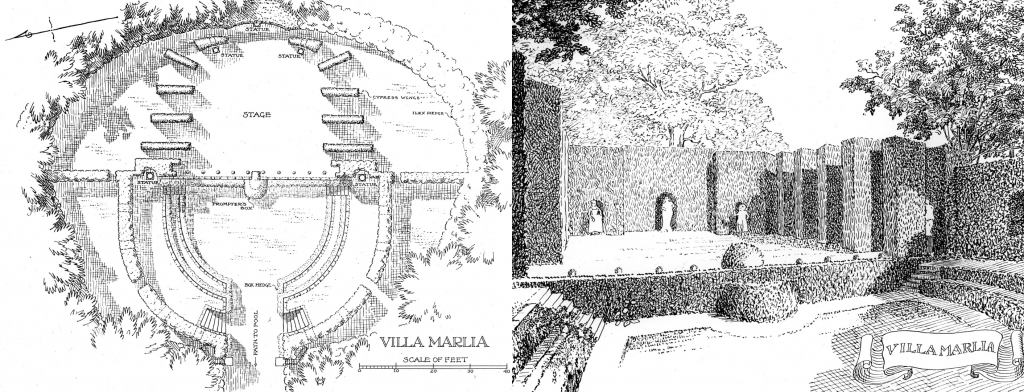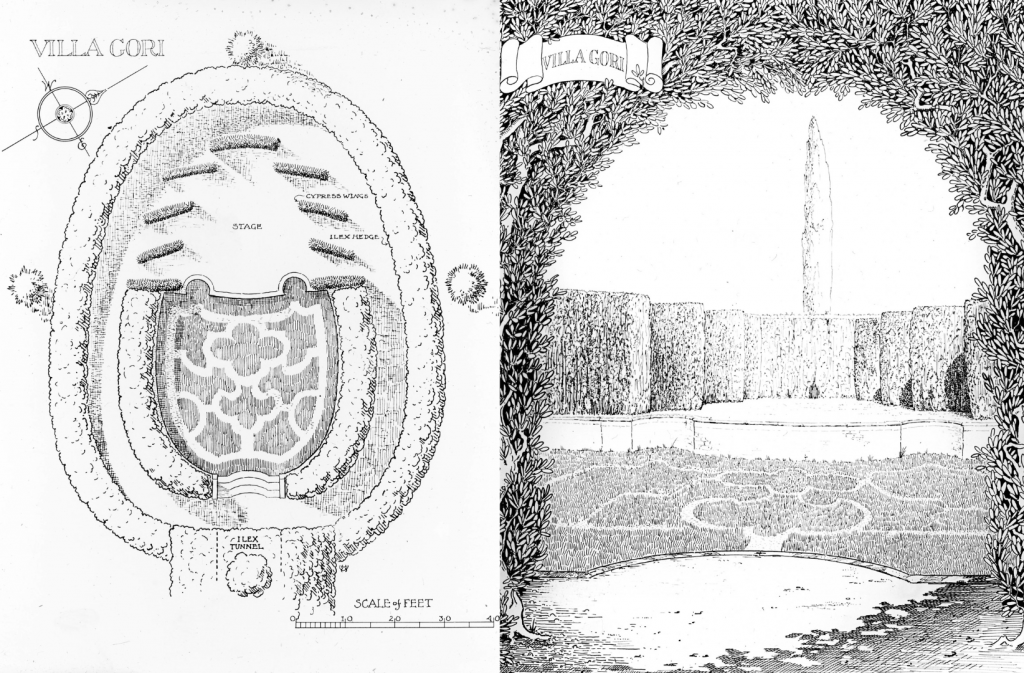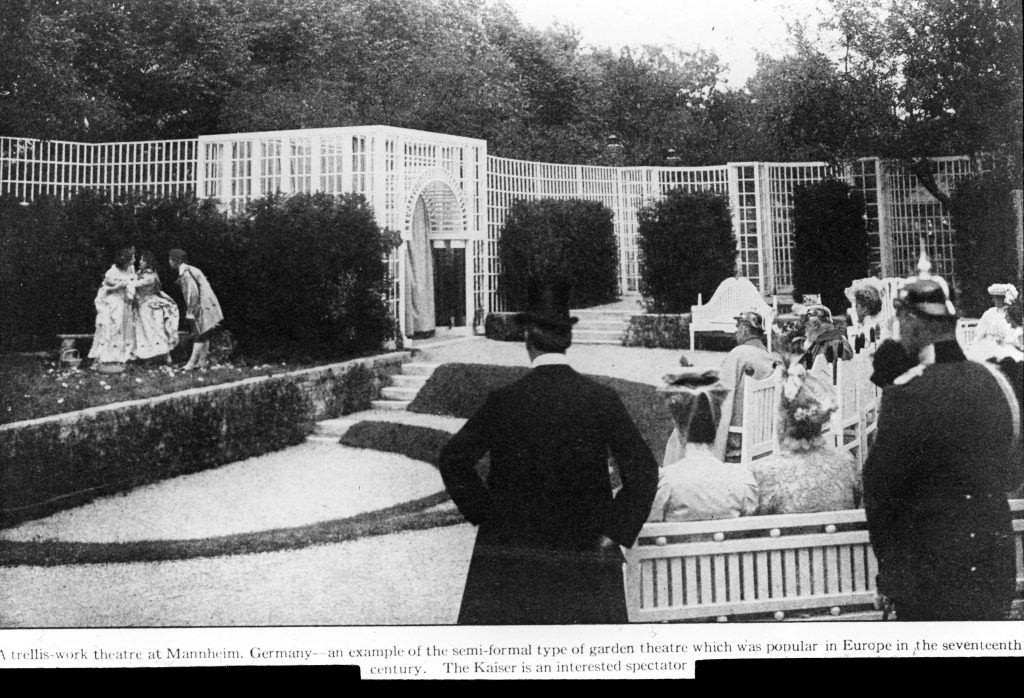by Heather Rockwood, Communications Manager
In 1599, William Shakespeare wrote As You Like It, in which the famous monologue by the character Jacques begins, “All the world’s a stage, and all the men and women merely players.” I didn’t expect that line to play in my head as I looked through MHS’s collection of glass lantern slides belonging to Arthur A. Shurcliff. However, that’s what happened when I came across this image (also shown farther below) of a garden theater, or hedge theater, a kind of theater I hadn’t heard of before, and wanted to learn more about.


According to Katrina Grant who wrote Teatri Vi Verzura: Hedge Theatres in Baroque Lucca, hedge theaters were created in 1652 in the Tuscan province of Lucca, Italy. They rose in response to the prevailing theory of Italian gardens at the time, that the visual display, or spectacle, of artfully designed gardens was live theater. Such gardens were a way to show the public your life, your money, your taste, and your style. Most hedge theaters comprised a raised, half circle of grass, with a stone wall or large hedgerow as the backdrop. This “stage” could have other features, such as fountains, archways, statues, seating, or fishponds. The property owners would invite friends and acquaintances to their hedge theaters for performances of poetry, music, excerpts from plays, or lectures on a variety of subjects; however, opera wasn’t offered, for it needed paid singers, which was not the idea behind these garden theaters—nor was there space for an orchestra.
Hedge theaters later became popular in other places, first in France, then in Germany, and finally, in Great Britain. The image below shows a hedge theater in active use. The bottom of the slide notes that “The Kaiser is an interested spectator.” Although the slide itself isn’t dated, “Kaiser” (emperor) was used in Germany from 1871 through 1918, so we can fairly date this photograph to that time frame. What I love about it is how it captures a hedge theater with an audience present and enjoying the performance.

One thing that Grant noted in her book was the impermanence of hedge theaters: “Such theatres are imitations of permanent structures rendered in impermanent material, and conversely, living performers are frozen in stone or terracotta.” I liked the idea that such theaters were the opposite of traditional theater space, with four walls and a ceiling that have longevity, with generations of actors coming and going. And the impermanence within the design also plays into the current day thought that the Baroque period was one of intense color, decoration, and drama.
With Shakespeare in the Park and other outdoor theatrical performances becoming more popular in the past few decades, perhaps hedge theaters are about to make a related comeback.
Learn more about Arthur A. Shurcliff and the collection of glass lantern slides. Learn more about the current exhibition, Boston Views: Through the Lens of Arthur A. Shurcliff.

